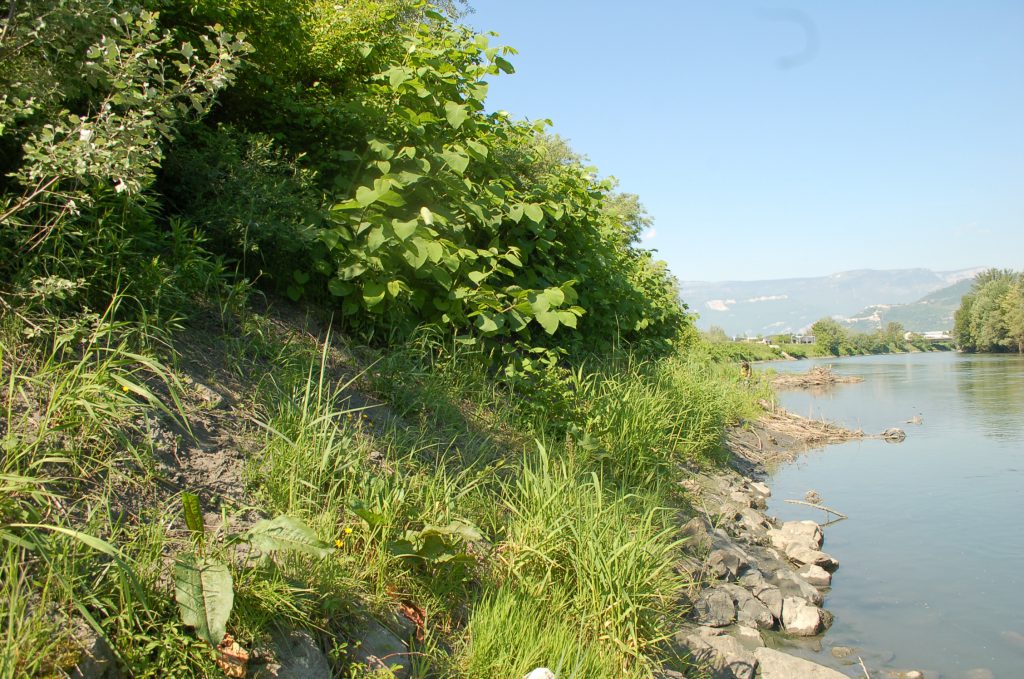Major increases in global trade have meant that many animal and plant species have moved, either voluntarily or fortuitously, out of their original habitats. While most of these species are not a problem, a number of them have become invasive and can cause problems in terms of human health, plant management or biodiversity. The resulting management costs can be very high.
Riverbanks are particularly affected by biological invasions. Riparian forests are, in fact, subject to strong disturbances (floods, anthropic pressures, etc). Disturbed environments are more sensitive than other areas to invasion. The spread of invasive alien species will thus be at the mercy of human disturbances and by way of the watercourse itself during floods.
Riverbank development must take this problem into account in order to better manage the invasive alien species in place, ensure that new ones are not imported while the work is carried out and design it in such a way as to not encourage their appearance after the work is finished. The photo opposite shows a mixed technique with riprap at the foot of the bank colonized by Japanese knotweed.
To elaborate
Barbault, R., & Atramentowicz, M. (2010). Les invasions biologiques, une question de natures et de sociétés. Quae.
Groupe de Travail National Invasions Biologiques en Milieux Aquatiques (GT IBMA). http://www.gt-ibma.eu/
Leveque, C., É. Tabacchi and M.-J. Menozzi (2012). Les espèces exotiques envahissantes, pour une remise en cause des paradigmes écologiques. Sciences Eaux & Territoires(1): 2-9″.
Muller, S. (2004). Plantes invasives en France : état des connaissances et propositions d’actions. Collection patrimoines naturels.
Tassin, J. (2014). La grande invasion. Odile Jacob.


